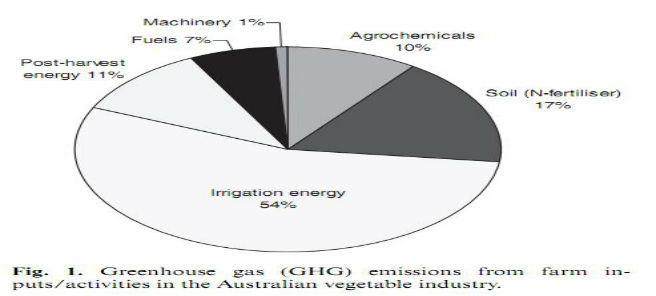Recently, partly due to the increasing carbon consciousness in the electorates and partly due to the imminent introduction of the Australian Government’s Carbon Pollution Reduction Scheme (CPRS), estimating carbon footprints is becoming increasingly necessary in agriculture. By taking data from several sources, this study estimates the national greenhouse gas (GHG) emissions from
a variety of farm inputs, for the 23 key vegetables crops grown in Australia. For the 121,122 ha of land occupied by vegetable farms, there are 1.1 MtCO2e GHG emissions or 9.2 tCO2eha−1.
- 65 % of total GHG emissions from the vegetable industry are due to electricity use for irrigation and post-harvest on-farm activities,
- 17 % from soil N2O emissions due to N fertiliser use,
- 10 % from agrochemicals,
- 7 % through fossils fuels and
- 1 % from on-farm machinery.
The top four vegetables, potatoes, lettuce, tomatoes and broccoli account for 29.1 %, 7.9 %, 5.9 % and 7.2 % of total GHG emissions from vegetables, respectively. However, the ratio of GHG emissions between the highest and lowest-emitting crops per hectare and per tonne, are different. Therefore, care must be exercised in carbon footprint labeling vegetable products to ensure that the labels reflect carbon emissions on a per tonnage basis.
